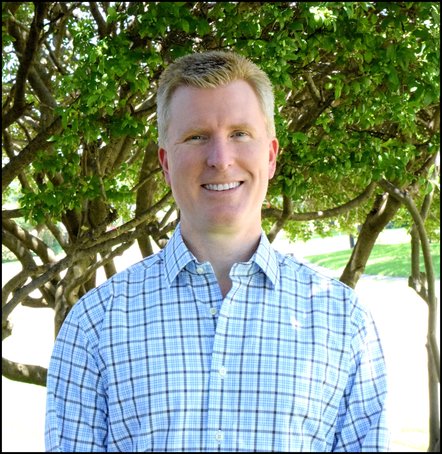When I reflect upon the aspects of my life that have fueled my love for geography, several images and experiences come to mind. As a child in the 1970’s living in El Paso, Texas, I can remember looking out the car window across the Rio Grande River into Juarez, Mexico. It was so amazing to me that that river separated two countries, and that the houses and lives of the people right across the river were so different from mine. There was also the bulletin board map of the U.S. in my bedroom that I used to love to study. There were the two-day car rides from El Paso to Jackson, Tennessee to visit relatives, during which I peered out the window as the landscape changed so drastically. And there was my elementary school social studies teacher, Mrs. Stoezal, who taught us about world cultures using engaging methods, such as cooking and eating authentic dishes from the countries we studied.
Unfortunately, I didn’t recognize in high school or college that geography was at the heart of much that interested me–so, I didn’t take many geography courses. The exception was the very interesting economic geography course that I took with Don Lyons at the University of North Texas in 1992. It wasn’t until 1994 when I participated in a three-week summer Geographic Alliance Institute at Southwest Texas State University (now Texas State – San Marcos), that I realized that geography was my true love. I had just completed my first year of teaching middle school U.S. History and Texas History. I loved (and still love) history, but the leaders of that summer institute – Dick Boehm, Jim Petersen, Byron Augustin, Rich Earl, and the experienced teacher consultants – sparked an enthusiasm for geography that has stuck with me for the past 21 years. I returned to my middle school teaching job that fall and infused much more Texas geography into my Texas history course. The next year I asked my principal to assign me to teach the 6th grade world cultures and geography class.
After a few years of middle school teaching, I decided to pursue a PhD and become a college professor. I struggled with whether I should do the PhD in geography, or in social studies education. I chose the program at University of Georgia because it allowed for me to do a bit of both. I took geography courses with Andy Herod, I.B. Logan, and Jim Wheeler, while also learning about educational research, comparative education, and educational psychology. When I completed my degree in 1999, I decided that maybe I should pay attention to this new World Wide Web thing. I became fascinated with how the web might be used to support inquiry learning and provide resources for history and geography teachers and students. I remembered the empty file cabinet and the lame teacher’s course binder that greeted me when I walked into my classroom as a first-year teacher in 1993, and imagined all the ways that web resources could offer so much more for new teachers.
I had heard of GIS during my graduate school years, but it seemed to be something that only computer guys played with. I didn’t consider myself a computer guy so I stayed away from it. Yet a few years of doing research with educational technology convinced me that I should give GIS another look. I decided to enroll in the GIS program through the Penn State World Campus. My first class with David DiBiase was absolutely outstanding. I gradually completed a series of courses through Penn State that made me feel much more confident about my GIS skills and helped me to think of ways to do research on GIS in education.
It was about this time that I decided to attend my first NCGE conference. I became a member of NCGE after the 1994 summer institute, but I didn’t attend a conference until 2004 in Kansas City. I was really impressed with the sessions and the friendliness of the attendees. The warmth of people like Kristi Alvarez, who spoke with me at my poster presentation, convinced me that this was an organization I could really enjoy. I began making NCGE my annual conference of choice. In 2005, I presented another poster at the Birmingham conference. Joseph Kerski stopped by and…well, anyone who has ever met Joseph knows what a great experience it is to meet and talk with him.
Today I teach geography at the University of Texas at Arlington. My primary courses are Introduction to Human Geography and a two-course sequence on the Historical Geography of the United States. I really love teaching geography at UTA. I’ve found that a discussion-oriented class is an excellent way to engage students with geography. In the Human Geography course, I have students read most of the chapters in the very thick book Introducing Human Geographies, edited by Paul Cloke, Phillip Crang, and Mark Goodwin. The readings really engage students in some deeply philosophical and theoretical ideas, and provide great fodder for class discussion. I think it helps students to see the geography in their everyday worlds and to recognize that geography goes far beyond memorizing place names. I also think that human geography can tend to trend too much toward the dead ideas of dead white guys, so for me it is important not to get too carried away with the likes of Von Thunen, Rostow, Christaller, and Burgess. In my historical geography classes we read D.W. Meinig’s Shaping of America series (all four volumes) across two semesters. Many of the students who take this class are history majors who are planning to become teachers. Thus, one of my goals in these classes is to help future history teachers understand how an eye for historical geography can make history teaching much more effective. Though I’ve been at it for 22 years now, I strive to be an even better teacher every semester. My friends at NCGE will continue to be an important part of my professional growth.
Dr. Andrew Milson


